The Startup Boilerplate: An Opportunity for Alignment
By Laura Vrcek, June 1, 2023
A lot of the companies we fund are so early on they often don’t yet have boilerplates. Sure, they may have an elevator pitch from fundraising, but customer-facing language shaped for the right audience is often still up in the air. For those who don’t recognize the jargon, your boilerplate is the three-to-five sentence description you use consistently to describe what your company does on public-facing channels.
At face value, boilerplates appear to be a simple copywriting task. But if you look deeper, you’ll see they’re actually an incredible opportunity to create internal alignment among stakeholders on a company’s first set of customer-facing messaging. So let’s talk about them.
One common messaging challenge I see very early startups tackle is taking lofty, aspirational boilerplates out of the abstract. I’m all for inspiring language, but the purpose of your boilerplate is to – in as few words as possible – convey the brass tacks of what your company does so your various constituents “get it” without having to think too hard. And it’s gotta tell customers how their lives can benefit should they purchase the product or service.
Here’s a (faux) boilerplate that lies at the lofty end of the messaging spectrum. Can you tell what the company actually does? Would a reporter be able to? How about your grandma?
Magic helps creators leverage their IP in new directions and propel their businesses into flourishing ecommerce companies. The platform has a minimal interface that’s designed to inspire while training creators on marketing best practices. We’re based in NYC and hiring.
While the boilerplate above does evoke a sense of curiosity, potential customers and reporters still may be unsure of what the company actually does. I usually suggest to founders and their early teams that they zoom really far out and explain what they do at the most granular level possible.
Sentence 1: State simply what your company does or offers.
Sentence 2: Expand upon user benefits (briefly).
Sentence 3: State your mission or illustrate culture in a single phrase. (Think recruitment.)
Sentence 4: Direct the reader/potential customers to where they can get more information.
So let’s rewrite the boilerplate for that fictional company with some of these principles in mind:
Magic’s software platform helps designers and artists create online storefronts and monetize their creative work. Upload a design, turn it into a number of products with the help of our AI concierge, and market it to your followers. Learn more here.
Voilà! I’ve always found the beauty of the boilerplate to be in its brevity – like a poem. When the real estate on the page is limited, you’re forced to write with economy and make some hard decisions.
By the way, if you’re a startup founder with a boilerplate you’re fairly happy with, try this: Ask your favorite AI tool to write a 3-5 sentence description for your company and see what it suggests. Is it accurate? Are there any surprises? What you find could be an indicator of how your company is showing up and could inspire fresh edits.
What content belongs in your company description? Is it weighted down with “good-to-knows” rather than essentials? What info could you move to a landing page? Less is, as they say, usually more.
Laura Vrcek is director of content strategy at True. She leads the True brand voice, partners with our team to amplify their insights, and creates resources to the benefit of the founder journey. She loves dim sum; dislikes unreliable pens. Meet the whole team.

